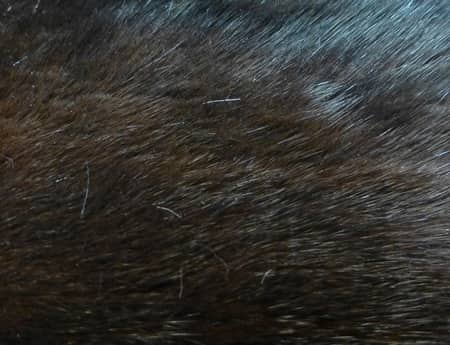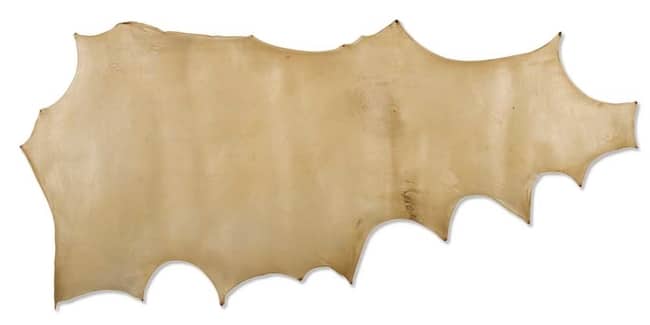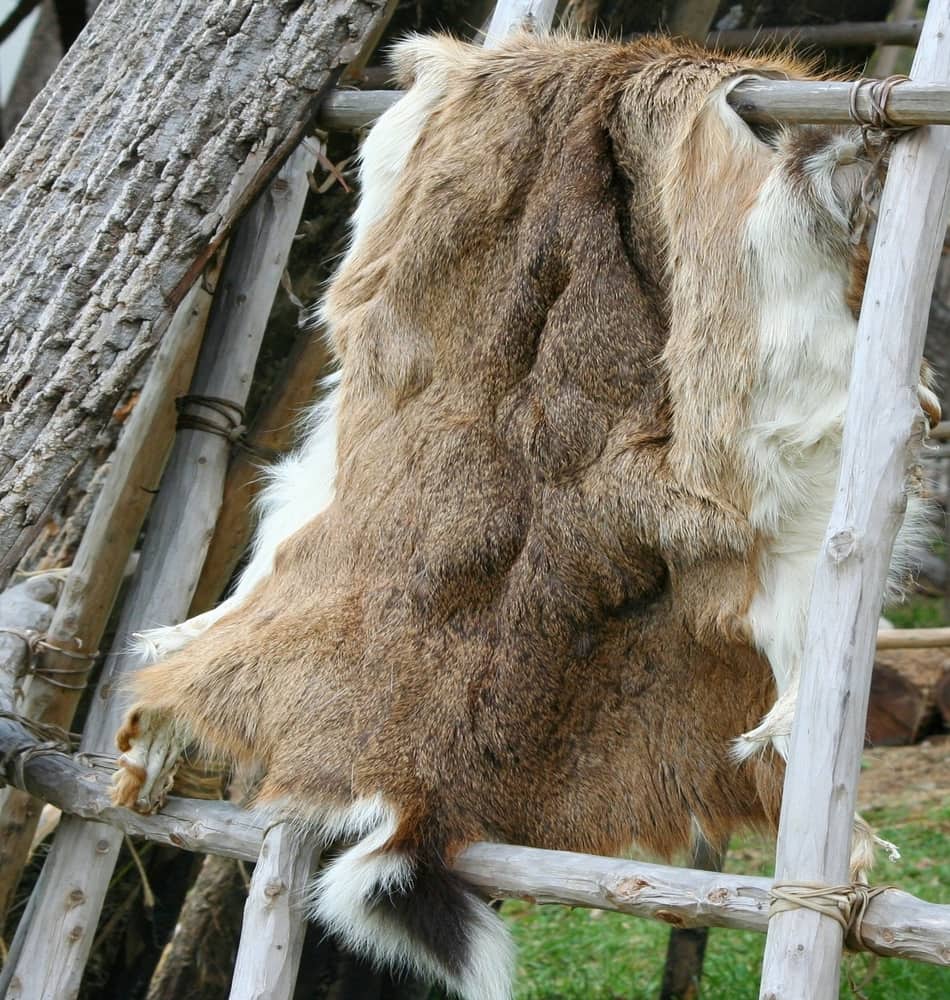Whether you know it or not, leather and pelts have differences. It’s absolutely easy to tell what leather and pelts have in common but how about differences? Curious as I am, I did some research and here’s what I found.
What is the difference between leather and pelts? Leather is the finished product after tanning and Pelt is an undressed skin or hide with its hair, wool, or wool. Pelt is another name given to hide or skin of animals while leather is used to classify all skin or hide that has been tanned.
But that’s only the tip of the iceberg when it comes to distinguishing between leather and pelts. Let us take a moment to briefly look at some of the unique characteristics of these two.
What is Pelt?

Hides and skins are very common terminologies in the world of leatherwork but not so much for pelts.
What is Pelt? Pelt is an undressed or unfinished skin or hide of an animal with its fur or hair still on. Usually, animal skins or hides that are unfinished are called pelts and in reciprocity Pelts are hides and skins of animals vice versa.
Pelts got from larger animals like cattle, buffalo are called hides. These are the beautiful material that is later processed to become leather.
Pelts got from smaller animals like goat, sheep, deer, alligator, pig, fish are the ones we call skins.
The most popular commercial hides are leather from cattle and some other livestock animals or groups of animals. The word “Skin” is used to define furs gotten from various animal species including bears, and cats.
What is the Difference Between Pelt and Hide or Skin?
There isn’t one. Pelt is just another term for a “hide or skin” of an animal.
It’s a simple mix-up. So, the next time you visit a leather shop and you will the terms used interchangeably.
What is Leather?

The term leather is very popular in the shoe, bags and fashion industry as a vital material. It is used as a symbol of class and to emphasize quality.
What is leather? Leather is the hide or skin (Pelt) of an animal that has been treated by tanning into a material that will not decay or decompose and can be used for various items ranging from body apparel, upholstery, and containers.
The history of leather dates back to prehistoric times when the prehistoric man tied a piece of leather around his foot to protect his foot from sharp stones and covered himself with leather to protect him from harsh weather conditions.
The use of leather started with mankind and has been a good servant to man for many years. Leather continues to serve us in various ways today and in more advanced ways.
The making of leather today has been largely industrialized with processes for leather making so much advanced. Rival industries to real leather industries have tried to imitation to real leather with tremendous success.
It is an attempt to largely save animals killed for their leather and also save the environment from toxins released after tanning.
Give or take, whether real or synthetic leather, the leather industry is booming as tools and materials for leatherwork have also greatly been improved from the use of crood tools.
Where do Leather and Pelt come from?
There is a lot of gifts nature has for us as humans and leather is one of the most precious not mineral resource from mother nature. The Leather industry creates numerous jobs that is taking care of millions of families all over the world.
Where do leather and Pelt come from? Leather and Pelt come from the skins and hides of animals like snakes, deer, goats and more treated by a chemical process called tanning. Leather and Pelts are sometimes gathered from hunting or the from the meat industry where animals have been properly raised from their meat.
Natural Leather and Pelts are by-products of the meat industry. When animals are slaughtered for their meat, their outer coverings (pelts) are gathered and processed by tanning.
The tanning process changes the pelts into the leather. The type of tanning done on leather determines certain key characteristics of the leather like color, toughness, flexibility and feel.
The most popular and type of leather is the vegetable-tanned leather due to the way several leatherworking techniques can be done on them easily.
History of Leather and Pelts?
Pelts is one of the most important natural resources mankind ever had, and as if not been stated enough, the first gift to man from Mother Nature. It has existed throughout the human history from the first man who covered himself in animal skin. It is profound to say that without leather, the early men may have not survived.
The early men killed animals for food and later discovered certain parts of the animals they killed could serve other purposes. The blood of the animal could be used as pigment for painting their caves, the fats of the animal as fuel for their lamps, bones as tools, and leather to clothe himself, make beddings and shelter himself from rain and the sun.
The amazing history of leather and pelts can be closely linked with the progress and advancements of man. Religion or civilization has records of leather usage as part of their history. History has found the use of leather for bows, sheaths, shields, foot-wear, armor, writing paper, water containers, musical instruments, and countless other items.
The ancient Chinese, Romans, Africans, Indians, Greeks, Europeans and Americans all used leather.
The pre-historic man learned to adapt by a hard piece of pelt around his feet to protect him from thorns. The use of leather helped to increase his hunting speed. He also wrapped pieces pelts cut as thongs around his arms and legs also for protection.
The primitive people made water containers with leather so that when he traveled he did not have to frequently go off route to drink water from springs and rivers which greatly increased his travel range.
The knowledge of leather usage advanced and they now could use leather for shoes, hats, tents, harness, beds, carpets, armor, saddles, and beautiful garments.
Fast forward, canvas-like boats were built and heads of drums were also made out of leather or pelts of animals that produced amazing sounds.
Egypt has the earliest record on the use of leather with surviving examples. 33rd-century leather articles have been found in Egypt. Religious use of leather is profound in Egypt. The use of leather sandals by pharaohs during biblical times shows the importance of leather.
Ancient Egyptians saw leather as a very expensive material and only used it to make items for the Pharaohs.
The documentation of history was also done on rolls of pelts that survived from 1500 BC till they were discovered. Without leather, a great amount of mankind’s history could have been lost.
The use of leather today is endless, and yet more uses of leather will be discovered. Leather today is used for upholstery in homes and in cars. The religious bodies also used pelts not only for musical instruments like drums but for seat covers, bible covers, wall hangings, pews, necklaces, and so many others.
Modern sports has advanced the use of leather for various things. Baseballs, football, basketballs, gloves, and shoes are made and used. There are also Spectacle cases, make-up kits, jewelry, jewelry boxes, camera cases, dog chew toys, children’s play toys, key-holders, wallets are a few more modern used of leather.
Characteristics of Leather and Pelts?
- Leather and pelt are durable
- They sometimes come with fur
- They are puncture and tear-resistant
- They have grain side and flesh side
- They are tanned
- Leather and pelts can be stretched
- They can be dyed
- Leather and pelts can be molded into shapes

